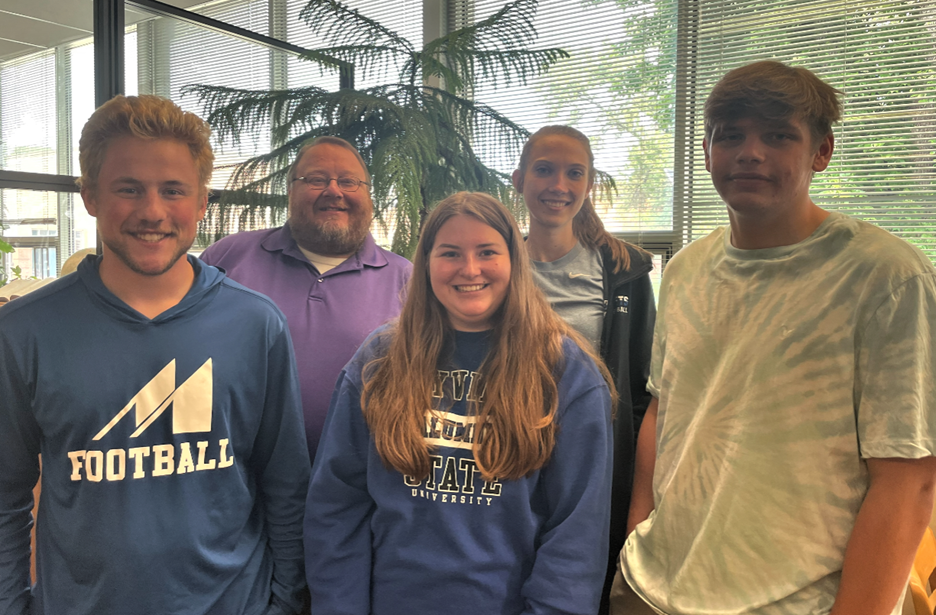
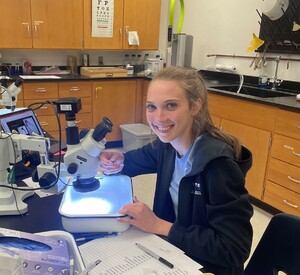 June 19, 2023
June 19, 2023
Mayville State University Associate Professor of Biology and INBRE Researcher Dr. Joseph Mehus has been studying mosquitoes in the Red River Valley of North Dakota for the last 17 years. He started out as a Mayville State University student who received a North Dakota EPSCoR (Established Program to Stimulate Competitive Research) award to do research with Dr. Jefferson Vaughan at the University of North Dakota.
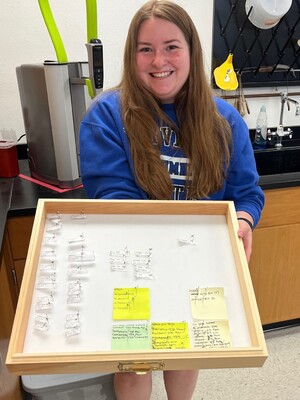 As a doctoral student at UND, Mehus studied mosquito population dynamics, host-feeding preferences of mosquitoes, and circadian patterns of Chandlerella quiscali (a parasitic worm that lives between the lobes of the brain of Common Grackles). Where Dr. Mehus’ doctoral research left off at UND, the Mehus Mosquito Lab at Mayville State University picked up in 2020.
As a doctoral student at UND, Mehus studied mosquito population dynamics, host-feeding preferences of mosquitoes, and circadian patterns of Chandlerella quiscali (a parasitic worm that lives between the lobes of the brain of Common Grackles). Where Dr. Mehus’ doctoral research left off at UND, the Mehus Mosquito Lab at Mayville State University picked up in 2020.
Since that time, Dr. Mehus’ research has been funded through North Dakota INBRE (IDeA Networks for Biomedical Research). Over the years, the lab has provided more than 15 students with hands-on, field, and laboratory experience. The current research team includes Taylor Painter of West Fargo, N.D., Jesse Halverson of Mayville, N.D., Madisen Knudsvig of Mayville, N.D., and Gavin Bohlman of Thompson, N.D.
“I truly enjoy showing up to work every day,” said Madisen Knudsvig. “Dr. Mehus and my co-workers create a positive atmosphere that encourages our curiosity and interest in science.”
Researcher Jesse Halverson says he has learned a lot during his time working in the lab. “Before I worked here, I was not a fan of most insects, especially mosquitoes, but as time has gone on, I’ve gained a deeper appreciation for the little things we share the world with.”
Working alongside Dr. Mehus, research students have collected and identified approximately half a million mosquitoes (17 different species) during the past few years. Researchers have collected information that they have been able to present in numerous oral and poster presentations.
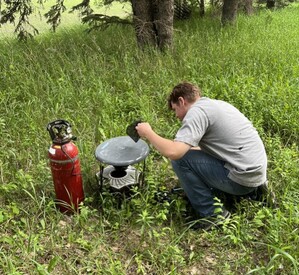 They have traveled to local ND INBRE conferences, as well as regional conferences such as the Annual Midwestern Conference of Parasitologists in Green Bay, Wis. and the National Entomological Society of America in Denver, Colo. Most recently, Taylor Painter presented a poster entitled, “West Nile Virus: A Tale of Two Species in Traill County, North Dakota,” at the Research Roadshow at the North Dakota State Capitol in Bismarck.
They have traveled to local ND INBRE conferences, as well as regional conferences such as the Annual Midwestern Conference of Parasitologists in Green Bay, Wis. and the National Entomological Society of America in Denver, Colo. Most recently, Taylor Painter presented a poster entitled, “West Nile Virus: A Tale of Two Species in Traill County, North Dakota,” at the Research Roadshow at the North Dakota State Capitol in Bismarck.
“This is my fourth and final year working in the mosquito research lab, which is bittersweet,’ said researcher Taylor Painter. “I am so thankful for all the knowledge and opportunities this has meant for me. I've attended and presented at research conferences, made connections with other members of the scientific community, and found my passion for research all while working in Dr. Mehus' lab.”
“This research is so important to understanding mosquito ecology in a highly underrepresented region of the United States,” said Dr. Joseph Mehus. “It lays the foundational information to understanding what mosquitoes are doing ‘out there.’ It also provides knowledge that could be critical if another mosquito-transmitted parasite or virus such as West Nile enters the country or moves into our local region.
“Furthermore, and maybe most importantly, our students benefit immensely from this type of research as it allows students to develop skills in scientific design and how to take the information given and process it in a manner that is useful to the public and scientific community as a whole. Throughout my research at Mayville State University, I have had the absolute best students working in my lab, They are so important in this research, and they are, and will always be, my main focus … but don’t tell the mosquitoes,” he said with a wink.
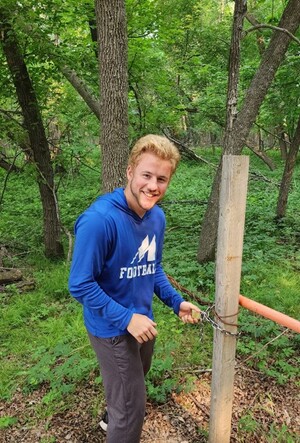 The Mehus Mosquito Lab continues its development of networking and collaborations with Dr. Corey Smith, assistant professor in pathology and the Virtual Indigenous Data Science (VIDS) Academy this summer. This project will utilize the many years of data that has come from the Mehus Lab while addressing the growing demand for data science education and mentorship within indigenous communities. This unique online data science curriculum is designed to introduce tribal college students to computational approaches and critical resources needed for advancing knowledge in biomedicine and public health.
The Mehus Mosquito Lab continues its development of networking and collaborations with Dr. Corey Smith, assistant professor in pathology and the Virtual Indigenous Data Science (VIDS) Academy this summer. This project will utilize the many years of data that has come from the Mehus Lab while addressing the growing demand for data science education and mentorship within indigenous communities. This unique online data science curriculum is designed to introduce tribal college students to computational approaches and critical resources needed for advancing knowledge in biomedicine and public health.
“Our collaboration with Dr. Mehus and his students has been instrumental to the success of our summer program in data science at the UND School of Medicine and Health Sciences,” said Dr. Smith. “Thanks to Dr. Mehus, participants in our ND INBRE Indigenous Data Science Academy have the opportunity, using mosquito data collected by the Mehus team, to apply analytic approaches that advance our understanding of the effects of weather on mosquito populations, the transmission of disease, and its consequences for human health.”
The lab is continuing to engage in mosquito collection in association with Cankdeska Cikana Community College and Turtle Mountain Community College. This activity not only provides research opportunities for those students, but it also provides foundational information about the mosquito fauna found throughout North Dakota.
First-year researcher Gavin Bohlman is happy for his experiences in the lab at Mayville State. “I’ve learned so much in a short time,” he said. “There was a little added responsibility and pressure for me to do well because I was recommended for this job by my chemistry professor, but I am starting to get the hang of things and am having a great time.”
“We could not do this research without the support of ND INBRE. Their support is greatly appreciated. In addition to ND INBRE and our collaborators,” said Dr. Mehus. “I send a HUGE thank you to all the local property owners who have graciously allowed me and my students to set up traps and collect mosquitoes almost every day near their homes, horse and archery parks, shelterbelts, and farmsteads. A study this comprehensive and of this magnitude really does take the efforts of the entire surrounding community. Thank you so much!”
Photo captions
Top: Mehus Mosquito Lab student researchers are photographed with Dr. Mehus. From left to right are Gavin Bohlman, Dr. Joseph Mehus, Taylor Painter, Madisen Knudsvig, and Jesse Halverson.
Second: Madisen Knudsvig sorts and identifies mosquitoes.
Third: Taylor Painter is pictured with voucher specimen, samples that have been collected and are in pristine condition.
Fourth: Jesse Halverson switching out catch bags from one of the mosquito traps.
Bottom: Gavin Bohlman enjoys the outdoors while gaining some field experience.
